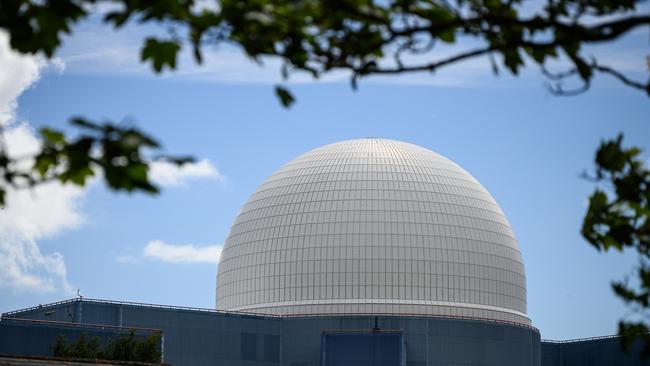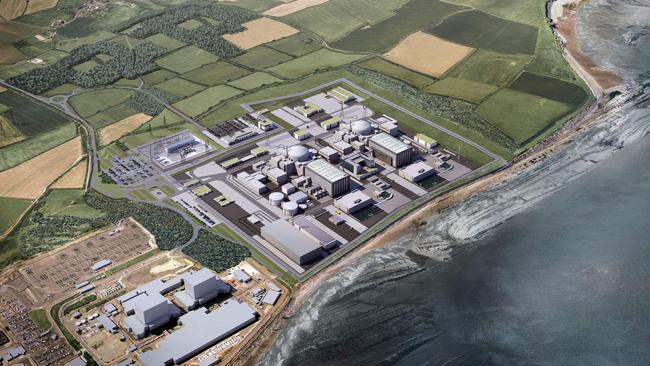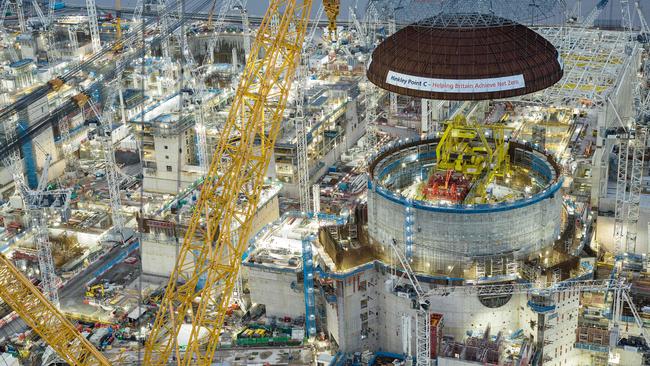How nuclear energy is keeping the lights on and industry going in Britain
On a windy afternoon in an European autumn, live data shows every five minutes the exact fuel mix driving Britain’s energy and it is the steady bedrock of nuclear power that keeps the lights on.

In Britain there is a website that can tell you, every five minutes, the exact mix of fuel that is driving the nation’s energy. The sources are colour coded and the graphs move as consumption rises and falls.
It’s a mesmerising snapshot of what’s happening in the push for net zero, as the blue lines for gas, light blue for hydro, green for wind, orange for solar and grey for nuclear alter with consumption and supply. The danger colour red signifies coal usage, which only occasionally blips onto the screen when other renewable supplies are stretched.
Perhaps symbolically, the nuclear line, in grey, appears as a solid thick block at the bottom of the graph. As analysts will tell you, it’s the stability of nuclear energy that fills in the peaks and troughs of renewable sources. It is keeping the lights on and industry going in Britain.

This is an article from The List: 100 Top Energy Players 2024, which is announced in full on November 22.
As I write this on a windy afternoon in autumn, it is not surprising that wind-generated electricity is the biggest contributor, supplying 47.9 per cent of the nation’s electricity to the national grid, with nuclear supplying 15.5 per cent and gas 12.7 per cent.
There is no coal, a sliver of hydro (1.1 per cent), some biomass (3.6 per cent), and 14 per cent of imports from France, Norway and Belgium, much of which is nuclear generated. Around 90 per cent of France’s electricity comes from nuclear and renewable sources.
A cold, still winter lunchtime here is very different: the gas supplies half of the energy mix, with solar and wind barely perceptible, yet nuclear still reliably supplies, for most of the year, between 12 and 17 per cent.

Successive British governments, driven by the need to reach net zero targets, and the energy shock created by the 2022 Russian invasion of Ukraine, have begun commissioning new nuclear reactors, with one due to open in the coming years, and extending the lifespan of existing ones, after several decades of declining capacity in the nuclear arena.
Politicians are looking to the reactors to not just supply a constant baseload of energy, but to add more supply to the mix and bring energy prices down. It is also to reduce a reliance on imports particularly from the French and Norway connectors. (Last year the UK paid around A$7bn to France, Norway, the Netherlands and Belgium for 12 per cent of net energy supply.)
This comes after a short-term drop in the country’s capacity to generate electricity with the closure of coal-fired power stations and decommissioning of nuclear sites. There were also reversals of political decisions to allow Chinese-owned entities to build and invest in British nuclear power plants around the time the government banned the Chinese telecommunications company Huawei from operating in the 5G mobile phone rollout.
However, by 2022 the Rishi Sunak Tory government declared that nuclear energy was “green” and even invested $A250m to support new nuclear ideas and prototypes of small nuclear reactors. The Labour government says it wants to significantly expand nuclear to supply 24 gigawatt electrical (GWe) of capacity by 2050 to provide about 25 per cent of electricity.

Energy prices are political dynamite in Britain and there is a common perception that once high reactor construction costs are paid for, zero emissions and relatively low running costs are worth the long lead time. Others say developing a small modular reactor will drive down costs; later this year one of four shortlisted firms will get the go ahead to put one into production.
Almost 60 per cent of the population support nuclear energy while about 20 per cent oppose it, according to surveys.
The public has largely backed the bipartisan push for nuclear because energy prices have ravaged household incomes. Ofgem, the department for energy, says a British house with two to three people spends on average A$3800 a year on energy, more than double the energy costs Australian consumers pay. The hit to the British householder is even worse because average salaries are 70 per cent of average Australian income.
Pension groups have warned that this northern winter, there could be thousands of deaths because a winter fuel subsidy has been withdrawn by the Labour government. People turn off the heaters, go to bed early and snuggle under an electric throw rather than heat the house.
Prime Minister Sir Keir Starmer launched Great British Energy soon after his election saying: “Nuclear is very much part of the mix as we go forward. And we will be pushing hard on it. I’ve already had discussions with the energy secretary [Ed Miliband] about how we can speed up when it comes to nuclear.”

His government is poised to commit a final $A40bn funding for a new reactor, Sizewell C, which is similar to the one under construction called Hinkley Point C. Each will power about six million households, but the cost of Hinkley Point C has blown out to $A80-90bn in 2024 prices. Construction delays mean it won’t open before 2029. The developer, French company EDF, which also runs the five other nuclear reactors in the country, will bear the additional costs because the contract allowed for a higher strike price.
In a letter sent to staff, Stuart Crooks, the managing director of Hinkley Point C, said 35 per cent more steel and 25 per cent more concrete was required because of substantial design changes required under British regulations. Other issues centred on supplies during the Covid-19 pandemic and labour shortages.
“Going first to restart the nuclear construction industry in Britain after a 20-year pause has been hard,” Crooks wrote.
A third reactor or the possible site for the small nuclear reactor is being looked at for Wylfa in Anglesey with hopes it could be operational by 2050.
The Nuclear Industry Association has also urged more nuclear plants, “at scale and at pace”. The association says there are now 87,000 people working in the UK nuclear sector, more than at any other point in British history, spurred by the Hinkley Point C and Sizewell C projects. But they warned the anti-nuclear stance of the Scottish government means that when the last remaining Scottish station closes in 2028, Scotland will have no nuclear power generation for the first time in 70 years.
Meanwhile EDF is looking to extend the life of the advanced gas cooled nuclear reactors at Torness, Heysham 1 and 2, and Hartlepool plants, which had been due to close in 2028, so that nuclear energy output is “for as long as possible”.



To join the conversation, please log in. Don't have an account? Register
Join the conversation, you are commenting as Logout